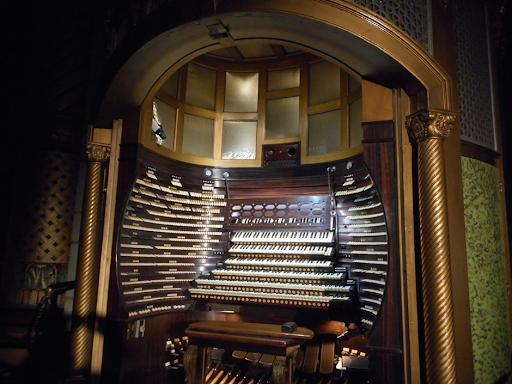
5 minute read
The Acoustics of an Organ - Nithin Simanand
from Serpentes Issue 6
At Radley college, we have all heard the organ and have had various degrees of experience with it; some only ever hearing it in chapel, some attending the recitals and some learning to play the instrument. Whichever category you may fall in, it is easy to appreciate that as an instrument, the organ is sophisticated, and its complex tone is dependent on a multitude of factors.
Let’s first consider it’s past. The organ was invented around 280BC and was used widely in the ancient Greek and Roman world. However, this was a very different instrument to the modern pipe organ. It used water (as opposed to electricity) as the source of power to blow the air in the pipes. It was used predominantly during games and races such as chariot racing and the gladiator fights. Over time the instrument became popular in Europe and organs were installed in churches, town halls, synagogues, and other performance venues such as in the royal albert hall in London.
The organ is built and tuned depending on the building it is in. The first thing to consider is the use case of the organ. An organ built in a hall for performances will be different to that accompanying a choir. Even then, one accompanying a small chapel choir will vary vastly with one accompanying a large cathedral choir.
Figure 1: Example of different organ designs The characteristics of the building plays a massive role as it affects the sound that finally reaches the listener. However, it is no surprise that acoustics is a precise science and in fact to achieve the perfect tone, many factors must be considered. These include the volume of air in the building per person, materials used in the construction of the building and where the different materials are, the shape of the different planes that make up the building etc. “One general rule to achieve this is to allow a minimum of 250 cubic feet of volume for every person.”
The tone is so easy to affect that we can notice the change as the season changes, and we go into summer dress. Listen out for it and you will notice that 700 boys plus dons wearing two layers of sound dampening layers fewer makes a difference. The tone is also altered by changes to temperature and humidity in the building. Both factors change the pressure of the air and by extension affect the sound wave travelling through them.
However, the biggest factor lies in the instrument itself. The organ has three key components that need to be placed strategically for the best possible sound: The console, the blower and the pipes. The console has the manuals, footboard and stops. The ‘manuals and footboard’ control which note is played and the ‘stops’ are used to select which pipes the air needs to

flow through. A large stop simply means that the pipes are longer, the actual stops themselves are the same size. The blower is a pump that blows air through the pipes specified by the notes played and the stops used. Different sets of pipes have different sounds and volume which are governed by the length and shape. They can be flutes or reeds. In flutes, the sound is produced from air flowing past an opening, whereas in reeds, it’s created by a vibrating piece of brass. The length of the pipes controls the octave of the notes. They can be 2, 4, 8, 16, 32 and even 64 feet in length (0.6, 1.2, 2.4, 4.8, 9.6 or 19.2 meters). Some stops cause air to flow through a mixture of pipes and are therefore called ‘mixtures’. A combination of these give the organ it’s unique yet instantly recognizable tone. The tone will be chosen by the organist by selecting appropriate stops and varies from piece to piece, often changing during a piece. It is not hard to imagine how much space such an instrument will take, the biggest of which is shown occupying 310(W)x137(H)x456(L) feet. This begs the question: where does it all go? The answer, however, is not what one would expect. Some Chapels, churches, etc, have the luxury of space and simply have massive sets of pipes that are 64 feet in height, the longest in the world.
There are only two true 64 foot stops in existence. One is the Diaphone Profundo at Atlantic City; the other is a Contra Trombone at the Sydney Town Hall. Therefore the answer to the question above is simply: it doesn’t. This is where the element of acoustics plays its best card, the illusion of deeper sound. When two pure tones (a sound with a sinusoidal waveform) are played, they combine to create two more sounds, with frequencies which are the sum and difference of the first two. This means that stops that are much smaller can be used to produce lower frequency tones that usually require a bigger set of pipes. This bass is called resultant bass and the new organ in Radley will have a stop with a resultant 32 feet bass though it is “only” 16 feet in length. This occurs at all frequencies but is most prominent at the lower, bass register.
So to summarize, the organ is the largest instrument in the world and is very old. It has been used in a variety of different locations across the world and can create a vast variety of tones and sounds that are distinct and instantly recognizable. However, there is a decline in the number of organists as there is a decline in the number of functioning organs, due to the cost, size and maintenance of the organ. As an example, during warden’s music every year you see how long it takes for the orchestra to tune using one note. Now imagine tuning every single note on every single instrument one at a time!

